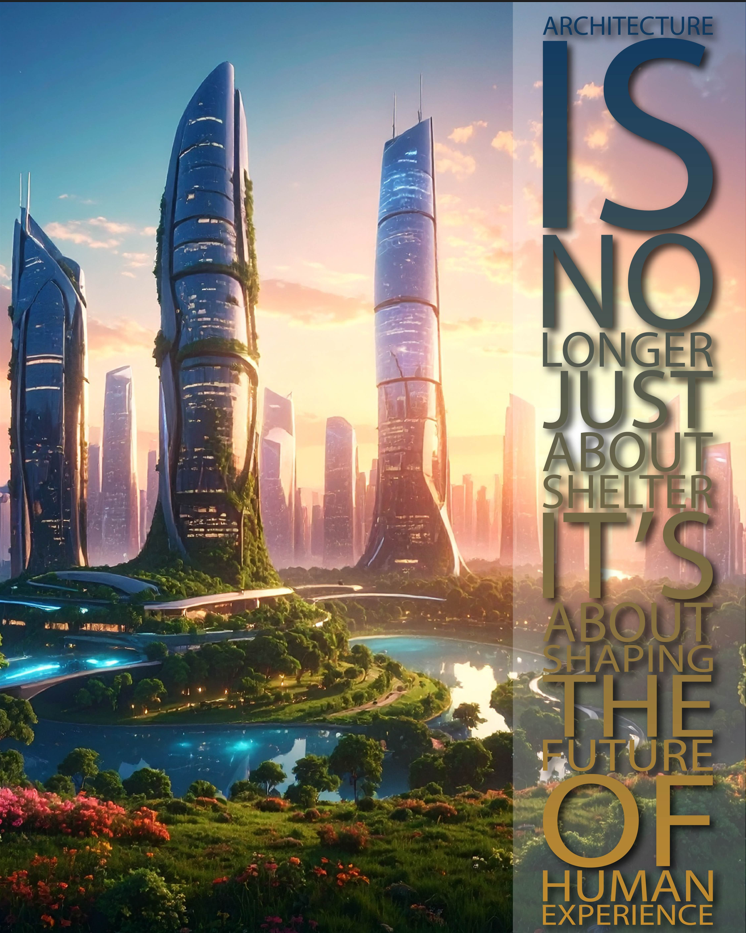
Future of Architecture
The Future of Architecture: Shaping the Human Experience
“Architecture is no longer just about shelter—it’s about shaping the future of human experience.”
As we look ahead, the future of architecture is being redefined. It’s no longer limited to constructing buildings—it’s about designing environments that enhance how we live, connect, and thrive. From sustainable materials to AI-driven design, here’s how architecture is evolving to meet the needs of tomorrow.
Sustainable Architecture: Building for a Greener Future
Sustainability is at the core of future architectural trends. Expect to see carbon-neutral buildings, renewable energy integration, and eco-friendly materials like self-healing concrete and algae facades. Vertical forests and green rooftops will not only beautify cities but also purify the air and reduce urban heat.
Keywords: sustainable architecture, green building materials, eco-friendly design
AI in Architecture: Designing with Intelligence
Artificial intelligence is transforming architectural design. AI tools can analyze data, generate design concepts, and optimize building performance. Architects will become strategic collaborators with intelligent systems, focusing on creativity and human-centered outcomes.
Keywords: AI in architecture, intelligent design systems, architectural innovation
Modular and Adaptive Architecture: Flexibility for the Future
With rising urban density, modular construction and adaptive design are gaining momentum. Future homes and offices will be prefabricated, reconfigurable, and scalable—designed to evolve with the people who use them.
Keywords: modular architecture, adaptive spaces, prefabricated buildings
Architecture in the Metaverse: Designing Virtual Worlds
The integration of augmented reality (AR) and virtual reality (VR) is revolutionizing how we experience architecture. From immersive design walkthroughs to digital twins of entire cities, architecture is expanding into virtual environments where creativity knows no bounds.
Keywords: architecture in the metaverse, AR/VR in design, digital twins
Human-Centered and Resilient Design
Post-pandemic architecture is prioritizing health, well-being, and community. Expect more biophilic design, natural ventilation, and spaces that foster social connection and mental wellness. Resilient architecture will be key in adapting to climate change and future challenges.
Keywords: human-centered design, resilient architecture, biophilic spaces
Final Thought
The future of architecture is about more than structures—it’s about shaping meaningful human experiences. As technology and sustainability converge, architects have the power to design a world that is not only functional but also inspiring, inclusive, and resilient.
